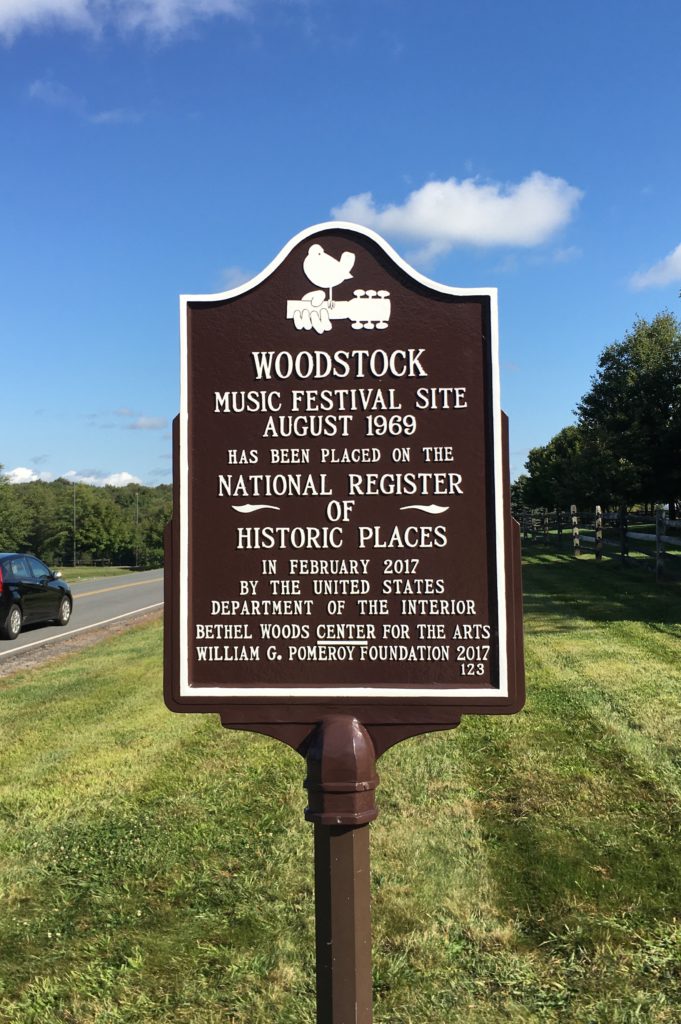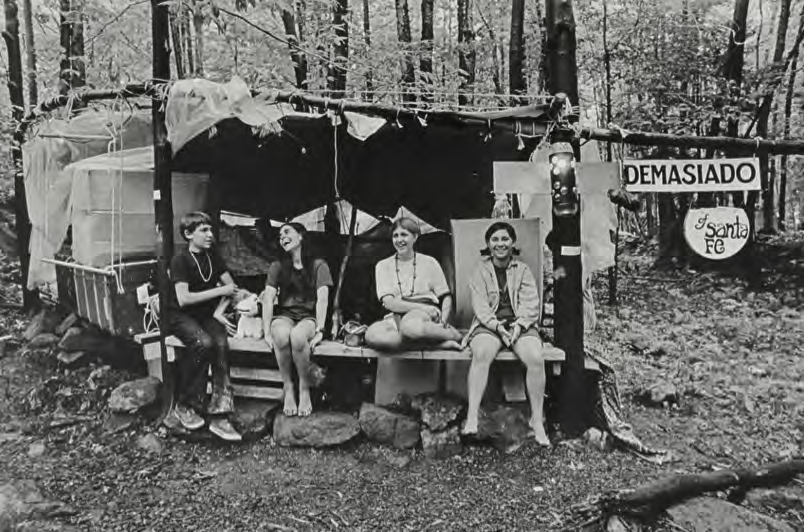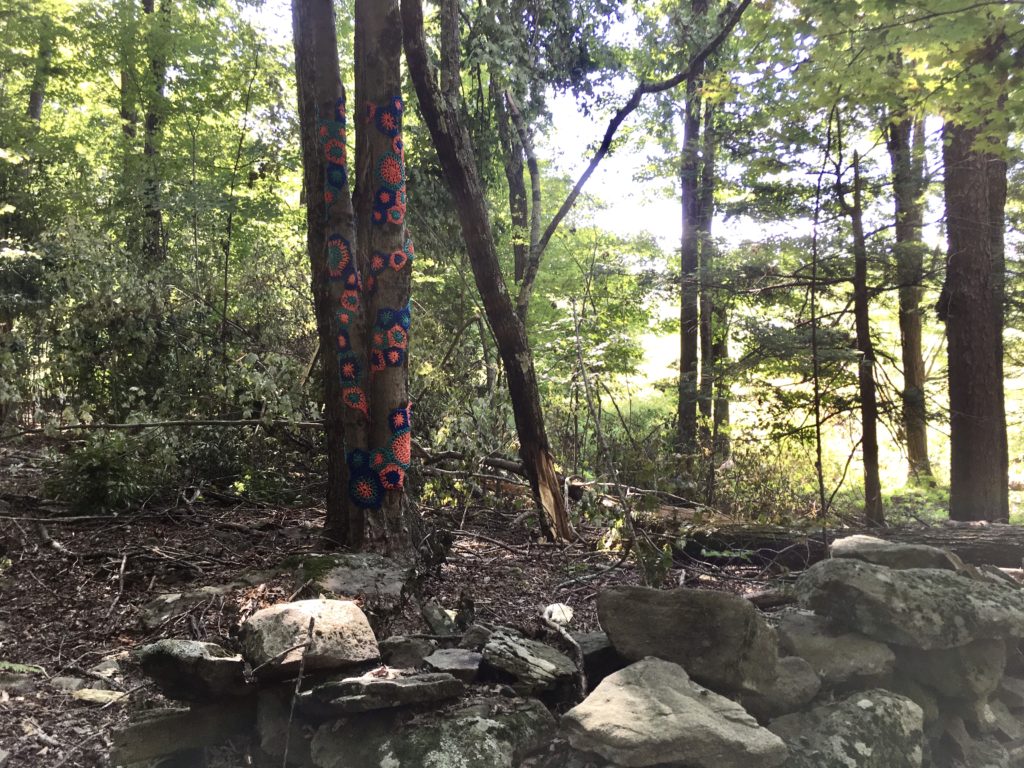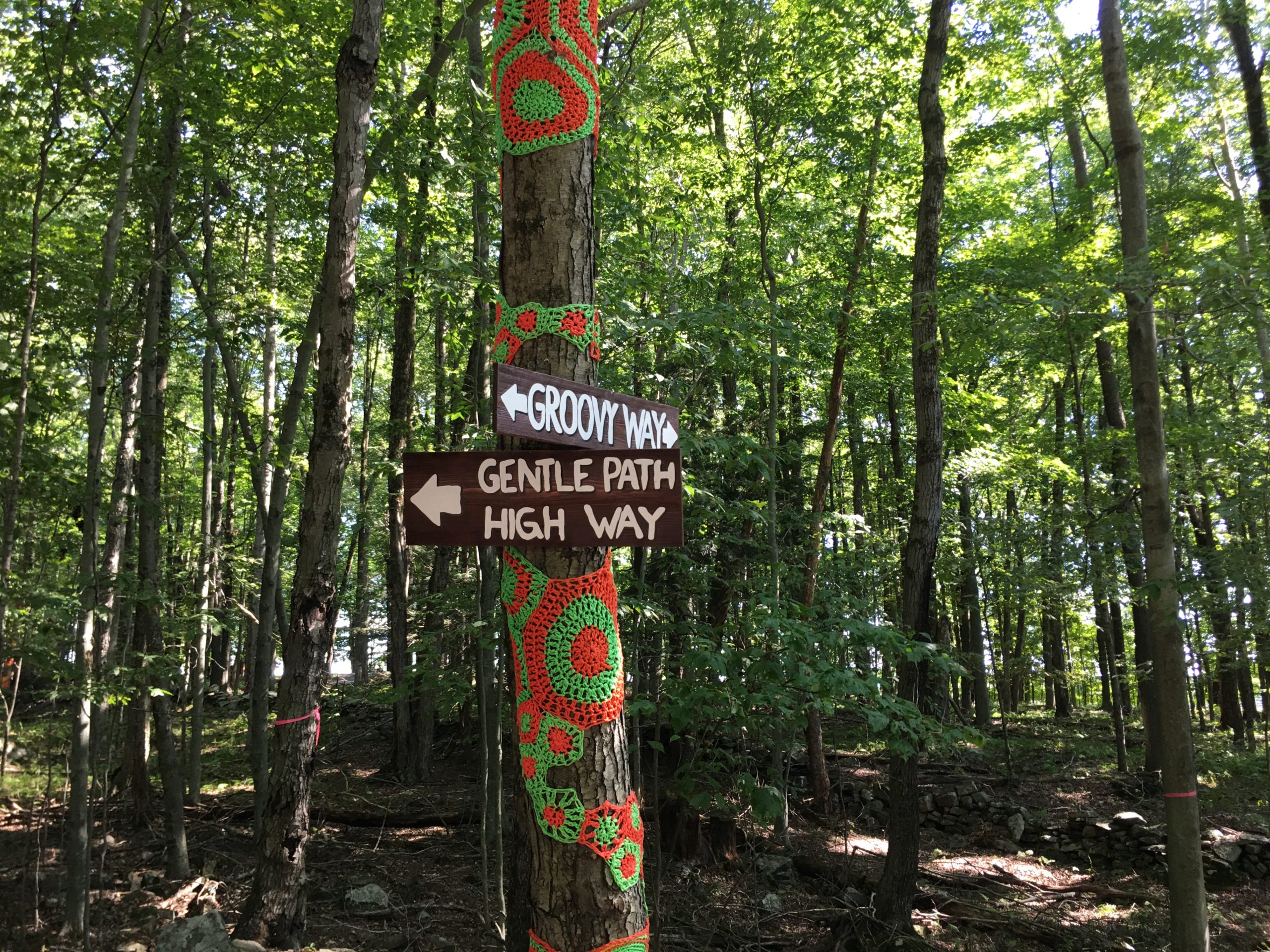
As the plaque above clearly shows, the 1969 Woodstock Concert is legitimately a site of historical importance. While the rule of thumb is that only sites at least 50 years old are considered for listing on the National Register of Historical Places, Woodstock was placed on the Register in 2017, only 48 years after the three day festival of music took place on Max Yasgur’s farm near Bethel, New York.
The Bethel Woods Center for the Arts and the Museum at Bethel Woods maintain the Woodstock site with the goal of preserving the historic landscape. The actual stage and seating area are now open grassed areas. Across the road there is a small wooded area known as Bindy Woods or Bindy Bazaar. In 1969, trails were cut through the woods and rocks were gathered and stacked to create simple foundations where vendors at the “Aquarian Crafts Bazaar” could set up makeshift stalls to sell goods to the concert goers.

Bethel Woods is reestablishing the Bindy Bazaar as a nature trail. Archaeologists from the Public Archaeology Facility at Binghamton University investigated the woods in 2017 and 2020. Substituting leaf blowers and rakes for trowels and shovels, they successfully located the stone foundations of most of the twenty-some booths. Some trees still have wires embedded in their trunks that date back to the concert.

Not all the trails through the woods have been restored yet. In the meantime, trees along the open walking paths have been decorated yarn- bombed by artist Carol Hummel.


participants were invited to sell memorabilia such as beads, moccasins, posters, T-shirts, etc., distribute reading material such as pamphlets, philosophical and political leaflets and underground newspapers, and dispense up to date festival information. By all accounts, the woods was also the most popular spot for the sale and purchase of drugs.”
National Register of Historic Places Registration Form, Woodstock Music Festival Site, 2017
